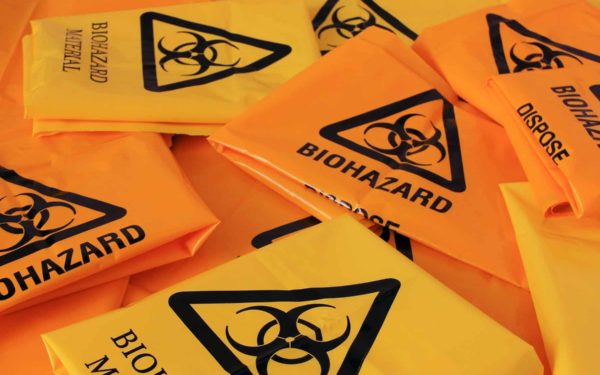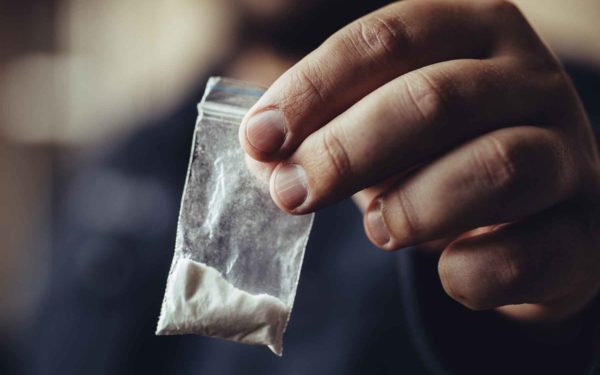US law enforcement intercepted a package containing ricin and addressed to President Trump in 2020.
Dr. Anthony Fauci feared for his life from ricin poisoning, after a hoax white powder spilled on his face.
Ricin is extremely toxic and fairly easily to make — but it is rarely harmful to dangerous mail attack victims.
A Canadian woman was detained in connection with a Ricin letter sent to the White House. Ricin is a deadly toxin, and this is an extremely serious incident.
The story hit the media this weekend, even though the US Secret Service and other federal agencies typically do not want this type of story to reach the public.
Dr. Fauci, of the NIH’s National Institute of Allergy and Infectious Diseases, explained his fear of ricin to the New York Times and again on Good Morning America.
The White House letter was caught at an offsite screening location by a third party, long before it ever would have reached a government official.
Mail threats like ricin-laced letters are mailed often, and mail security screening procedures like that are standard practice for high-profile individuals.
Security professionals can expect to see an uptick in incidents like this, for two reasons—
- First, individuals with bad intentions have been reminded this is an easy way to act out.
- Second, mail handlers and first responders are reminded of the same thing. Threats they might have ignored last week will now receive a higher level of scrutiny.
Previous Ricing Mail Threat Incidents
Ricin was found on letters at two separate prison mailrooms in California in 2018. This toxin has been used in warfare, although some applications violated ethical conventions, and assassinations since World War One.
How did ricin get into two jail’s mail streams forcing 116 people into quarantine?
The honest answer is: very easily.
The castor bean plant is common, readily available and requires no special requirements to grow. The refining process from a castor bean to the ricin toxin is equally as simple.
The best mitigation techniques for the threat is through preventive protection methods and diligence in the execution of mailroom tasks.

Ricin in the Mail
Mail, historically, is a preferred method to deliver ricin because of the small amount of the toxin required to cause injury. The little amount explains why 116 people were exposed and placed into quarantine as detection is difficult.
However, the injury rate itself for mailed ricin is very low for two specific reasons.
First, once detected, there is a high identification rate due to how simple ricin is to make. With only one pre-cursor to identify, castor beans, ID is quite easy (although false positives are common).
Detection, however, becomes the frustration with this threat.
The second reason is the difficulty in transferring the threat to the human body. When used in assassinations, for example, the delivery method was injection into the victim.
Simply touching it does not necessarily mean harm and more often just quarantine and why all 116 individuals were released without injury.
Related: Subway HQ Receives Suspicious Powder After Recent Firings

Protect against Ricin in Mail
So, how do you protect yourself and what happens if you find ricin inside of your mailstream?
First, identify possible targets within your organization ahead of time and segregate their mail from the rest of the mailstream and screen it. CEOs, HR representatives and other high-risk individuals are good examples who require extra scrutiny.
Second, protective gloves and a dust mask create an instant barrier between mail handlers and possible threats.
Mail is dirty enough as it is without adding ricin into the mix.
Third, once an unknown powder or liquid is detected, have a standardized plan in the workplace that is universally understood.
Whether it’s a plastic bag, a protective sleeve or a bin, as long as it’s known by all and can be easily explained to first responders, it is an effective idea.
Finally, have a place to clean and decontaminate anything exposed to the threat while waiting for a response team.
If possible, avoid eyewash stations because people tend to rub their eyes with the most contaminated part of the body, the hands.
Warm water and soap are extremely effective and is generally the fastest way to clean almost anything that has been contaminated.
The most important aspect about protection is the preventive tasks that are so easy to do but so quickly quit.
During mail handling events using gloves, wearing masks and refraining from opening items close to the face significantly lowers exposure possibilities.
Most threats are found by an alert and conscientious individual who pays attention to their surroundings. If you see something simply say something to mitigate risks!

